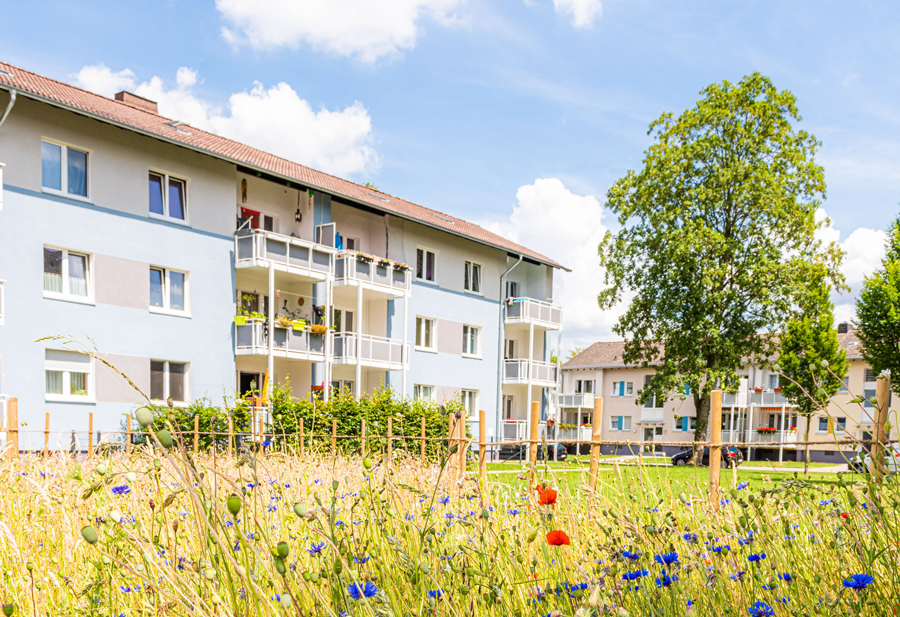Implementation of the Recommendations Made by the Task Force on Climate-related Financial Disclosures (TCFD)
GRI
102-15
201-2
We began the process of integrating sustainability risks into the company’s risk management system in 2020. In this context, we have incorporated the recommendations of the Task Force on Climate-related Financial Disclosures (TCFD) into our reporting process in order to shed special light on the climate-related risks of our business. Implementing the recommendations of the TCFD provides us with a better understanding of the risks that are relevant to our company.
Implementation of the TCFD Recommendations at Vonovia
|
Implementation of the TCFD Recommendations at Vonovia |
||||
|
Content of the recommendations |
Implementation at Vonovia |
Further Information |
||
|
Governance |
||||
|
Organizational structure of the company regarding climate-related risks and opportunities |
Overall, Management Board bears responsibility for sustainability and climate protection as well as climate-related risks and opportunities; it decides on strategy and targets |
2021 Sustainability Report:Environment and Climate Managing Opportunities and Risks 2021 Annual Report:The CompanyCorporate StructureSustainability Management at VonoviaManagement SystemEnvironmental IssuesOpportunities and Risks |
||
|
Sustainability Committee – comprising the entire Management Board and representatives of the central functional departments Sustainability/Strategy, Controlling, Communication, Investor Relations and Accounting – determines the strategy and targets and monitors progress |
||||
|
The central department Sustainability/Strategy, within the executive division of the CEO, coordinates and drives the measures and their implementation |
||||
|
Climate-related risks are calculated and collated on a half-yearly basis as part of the company-wide risk management process; the process is coordinated by Controlling, with the Management Board taking the final decision on risk assessment |
||||
|
Energy efficiency modernization in the existing portfolio in Germany is the responsibility of the CRO (Regions and Portfolio Management); for Austria, the CDO is responsible, for Sweden, the CEO of Victoriahem |
||||
|
Technical implementation and use of new technologies by Value-add unit |
||||
|
Non-financial indicator Sustainability Performance Index (SPI) includes carbon intensity of the building portfolio |
||||
|
Strategy |
||||
|
Actual and potential impacts of climate-related risks and opportunities on the organization’s businesses, strategy, and financial planning |
Climate protection and carbon reduction is a fundamental part of the corporate strategy as a key driver for long-term business success |
2021 Sustainability Report:Environment and Climate Sustainable Construction and Refurbishment 2021 Annual Report:StrategySustainability Management at VonoviaEnvironmental IssuesRisk Assessment Based on Sustainability Aspects |
||
|
Binding climate path defined on the basis of various scenarios in partnership with scientific institutions |
||||
|
Comprehensive modernization measures to increase energy efficiency as well as use of neighborhood solutions with renewable energies (fuel switch) |
||||
|
Currently, transitory rather than physical risks are expected, e.g., through legislation in Germany (carbon pricing) and the European Union, as well as through the lack of economic viability of energy-efficient modernization and the development of renewable energy generation (balance between investments, apportionment opportunities and affordability for tenants) |
||||
|
Particularly promising opportunities to generate energy for tenants to use for heating and electricity |
||||
|
Risk management |
||||
|
How the organization identifies, assesses, and manages climate-related risks |
|
2021 Sustainability Report: Managing Opportunities and Risks 2021 Annual Report:Risk Assessment Based on Sustainability AspectsOpportunities and Risks |
||
|
Climate risks integrated into company-wide risk management process, assessment of all risks by management every six months |
||||
|
Physical risks will be assessed in the future on the basis of regularly updated risk maps |
||||
|
No material risks for building portfolio of Vonovia currently identified |
||||
|
Metrics and targets |
||||
|
Metrics and targets used to assess and manage relevant climate-related risks and opportunities |
Comprehensive and complete carbon footprint report for building portfolio and business operations according to GHG emissions protocol and IW.2050 |
2021 Sustainability Report:Environment and ClimateSustainable Construction and Development 2021 Annual Report:StrategyManagement SystemEnvironmental IssuesForecast Report |
||
|
CO2e in portfolio (in Germany) 2021: 871,290 tons (Scope 1, 2, 3*) |
||||
|
Expansion of renewable energies with photovoltaic systems: 451 systems with 16.8 MWp nominal output |
||||
|
Targets: |
||||
|
Virtually climate-neutral portfolio by 2045 (<5kg CO2e/m² of rental area) |
||||
|
Reduction of carbon intensity from current 38.4 kg to <25 kg CO2e/m² of rental area by 2030 |
||||
|
Installation of PV systems with nominal output of >200 MWp on 17,000 roofs by 2030 |
||||
|
Reduction of the average primary energy demand in new buildings to 31 kWh/m² by 2025 |
||||
- *Scope 3.3: “Fuel- and energy-related emissions upstream”.


